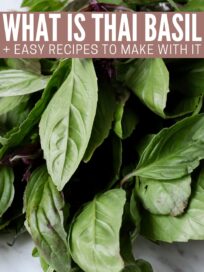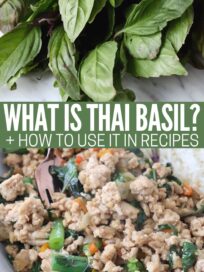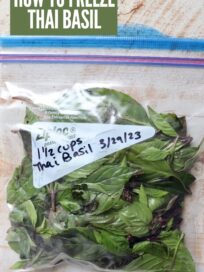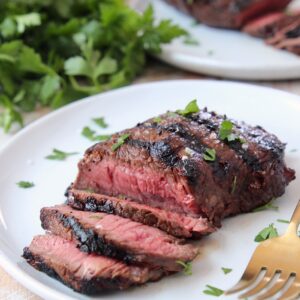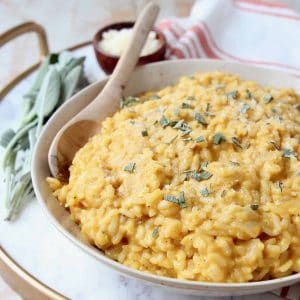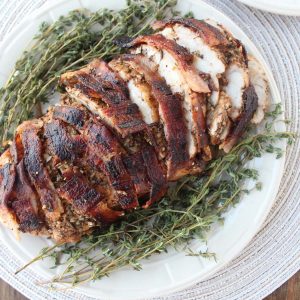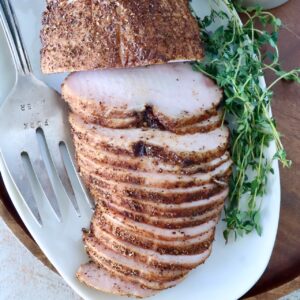What is Thai Basil? + How To Use It In Recipes
This post may contain affiliate links.
If you’re looking to add some bold and aromatic flavors to your favorite Thai dishes, Thai basil is a must-try ingredient. This herb boasts a sweet and slightly spicy taste, with notes of anise and licorice. The leaves are shiny and dark green, and have a slightly tougher texture than regular basil.
In Thai cuisine, Thai basil is commonly used in stir-fries, curries and soups, and pairs well with meats such as chicken, pork, and beef. It’s also a great addition to salads and spring rolls, adding a refreshing and fragrant touch.
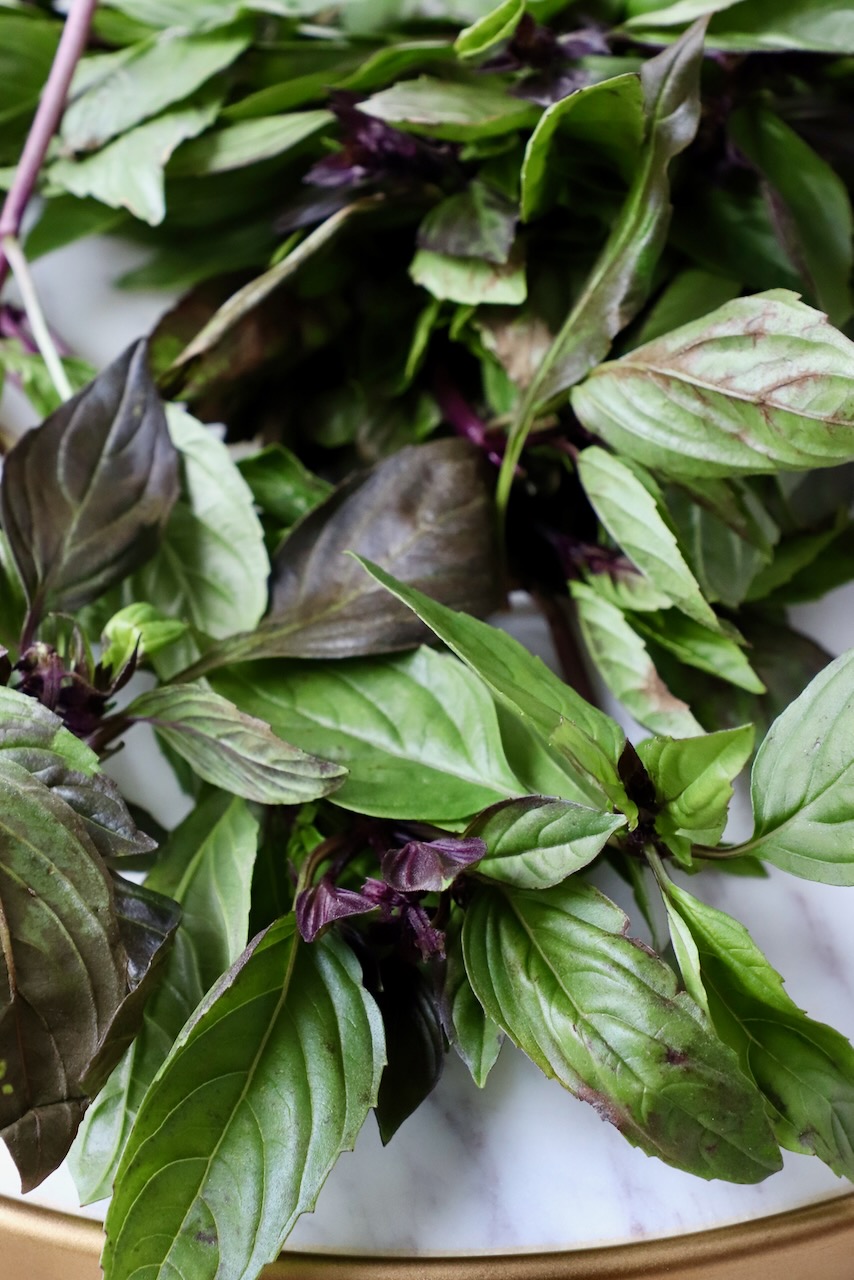
Table of contents
Today I’m excited to share all about one of my all-time favorite herbs, Thai basil. If you’re not already using this amazing ingredient in your cooking, it’s time to start! So what does Thai basil taste like?
It has a distinct and delicious taste that is slightly sweet, spicy, and has hints of anise and licorice.
Its aroma is also amazing and can instantly transport you to a bustling street food market in Bangkok, Thailand. When you cook with Thai basil, you’ll notice how its flavor and aroma infuse into your dish, making it more complex and flavorful. To make authentic Thai food at home, Thai basil is a must-have ingredient!
Why Thai basil should be a staple in your kitchen
- It adds bold and aromatic flavors to your dishes!
- It’s versatile and pairs well with many different ingredients.
- It will enhance the authentic flavors of all of your favorite Thai recipes!
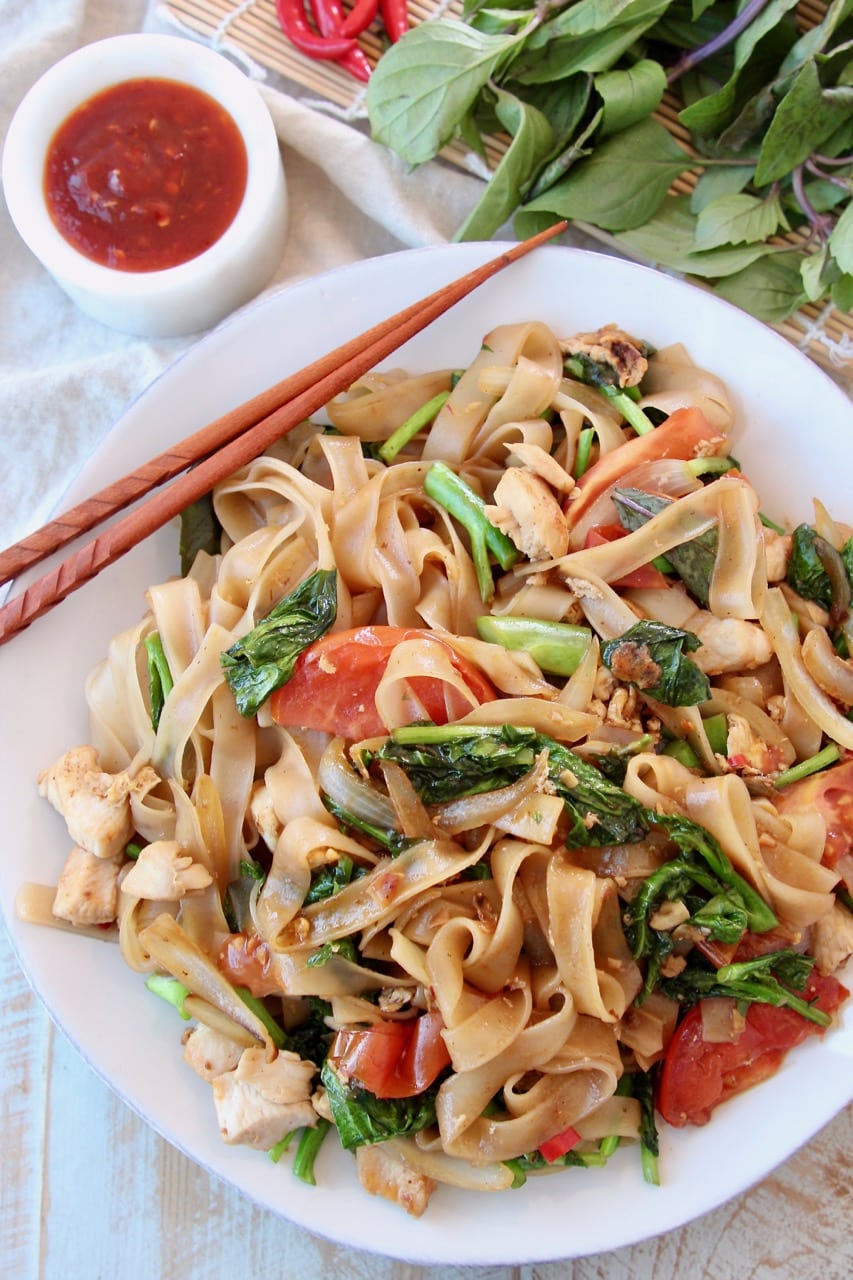
Ways to use it
One of the best things about Thai basil is how versatile it is. It’s a great addition to many different types of dishes, from stir-fries and curries to soups and salads. It also pairs well with a wide range of meats, including chicken, pork, beef, and seafood. You can also use it in vegetarian and vegan dishes, or as a fresh and fragrant garnish.
Here are a few ideas for how you can incorporate Thai basil into recipes at home.
- Add it to stir-fries, curries, noodle dishes and soups for a burst of flavor and aroma.
- Mix it into your salads, or add it to spring rolls for a fresh and fragrant twist.
- Make a Thai basil pesto or chimichurri to use as a sauce or marinade for meats and vegetables.
Or try it in any of these delicious recipes.
- Thai Basil Chicken
- Drunken Noodles (pictured above)
- Thai Basil Beef – from A Saucy Kitchen
- Thai Coconut Shrimp Curry – from Peas and Crayons
- Vegan Thai Basil Stir Fry – from Cooking with Camilla
- Thai Chicken Spring Rolls – from Sumptuous Living
- Thai Red Curry Noodle Soup – from My Formosa Food
- Thai Vegetable Crunch Salad – from Feasting At Home
It’s also a delicious addition to Pad Thai, Thai Yellow Curry or Thai Coconut Soup.
When cooking with Thai basil, it’s best to add it towards the end of the cooking process, as its flavor is delicate and can be easily overpowered by other ingredients. You can also use it as a garnish for a pop of color and flavor.
The leaves, stems and flowers of the Thai basil plant are all edible. But I do recommend removing any tough, thicker stems before adding the basil to a recipe.
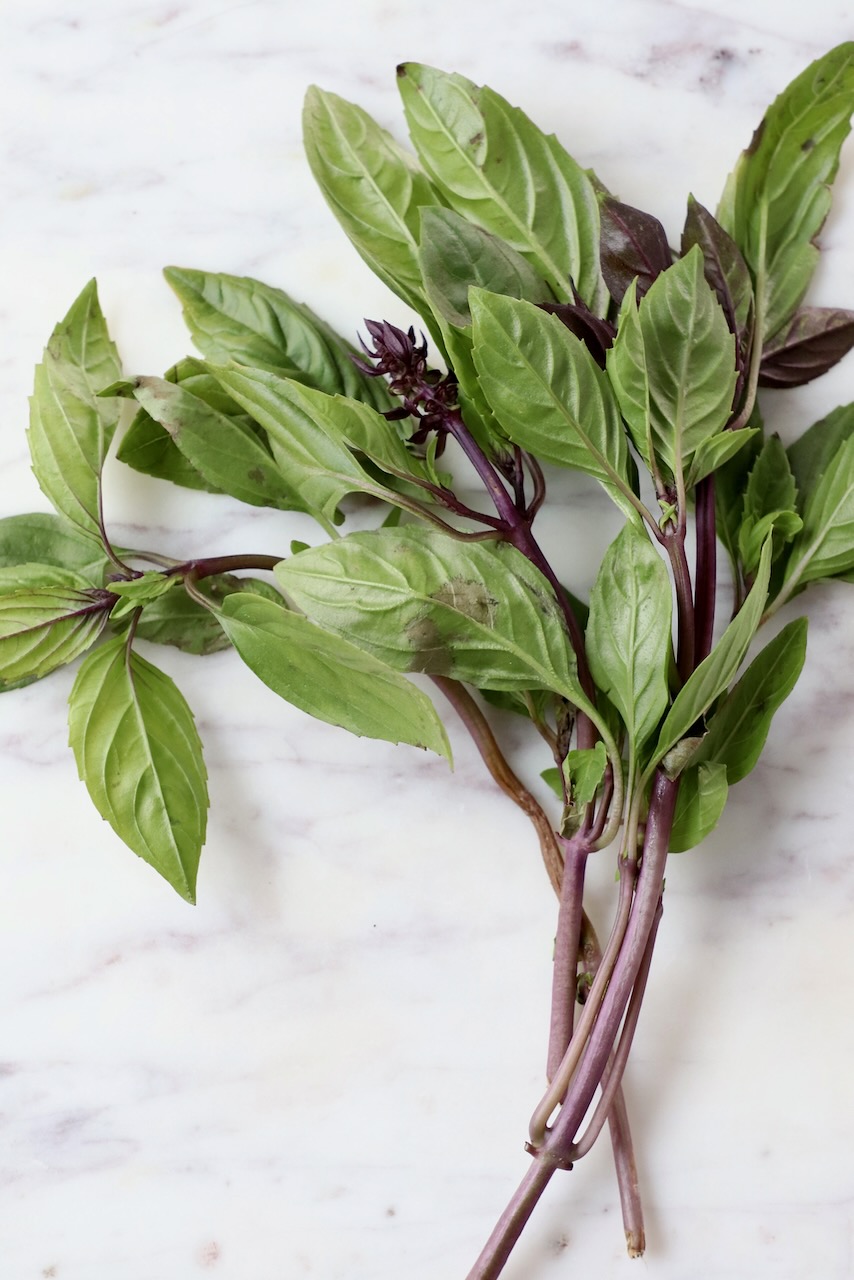
Where to buy it
Thai basil can be found in some traditional American grocery stores and almost all Asian markets.
Some larger supermarkets carry Thai basil in the produce section, especially those that have a wider selection of international foods. Look for it alongside other fresh herbs such as cilantro, mint, and parsley.
Because Thai basil is a staple ingredient in many Southeast Asian cuisines, it’s almost always sold in Asian markets. These markets typically have a wider variety of fresh herbs and produce, and you may be able to find different varieties of Thai basil as well.
When shopping for Thai basil, look for leaves that are shiny and dark green, with no yellow or brown spots. The leaves should be fragrant and slightly tough to the touch. You can use it immediately, or store it in the refrigerator wrapped in a damp paper towel for up to a week.
If all else fails, pick up a Thai basil plant at your local nursery and grow your own herbs at home.
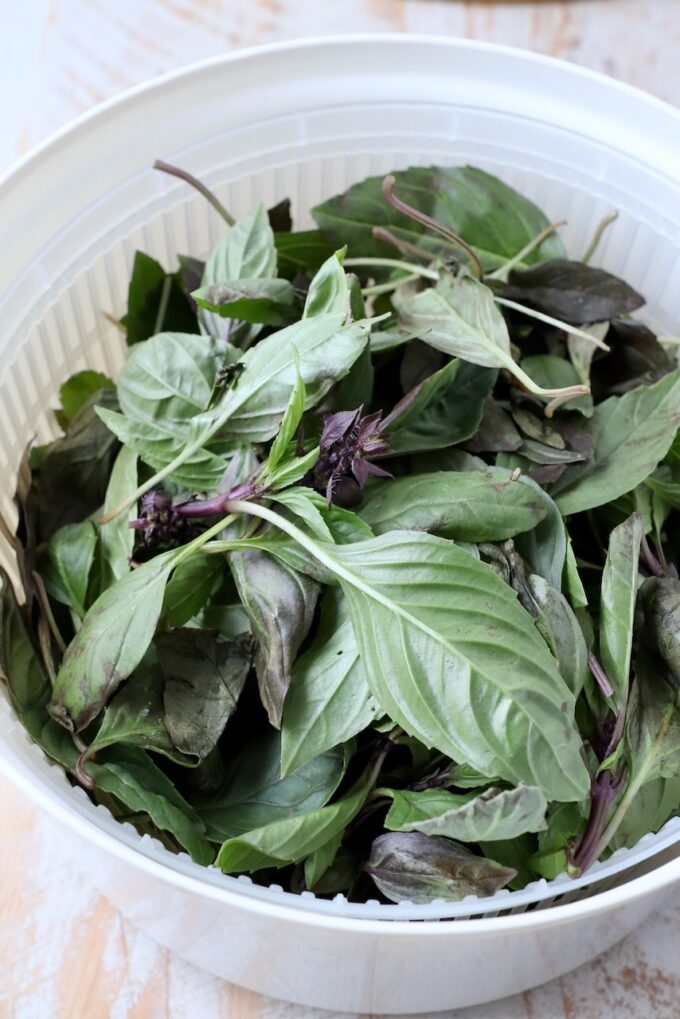
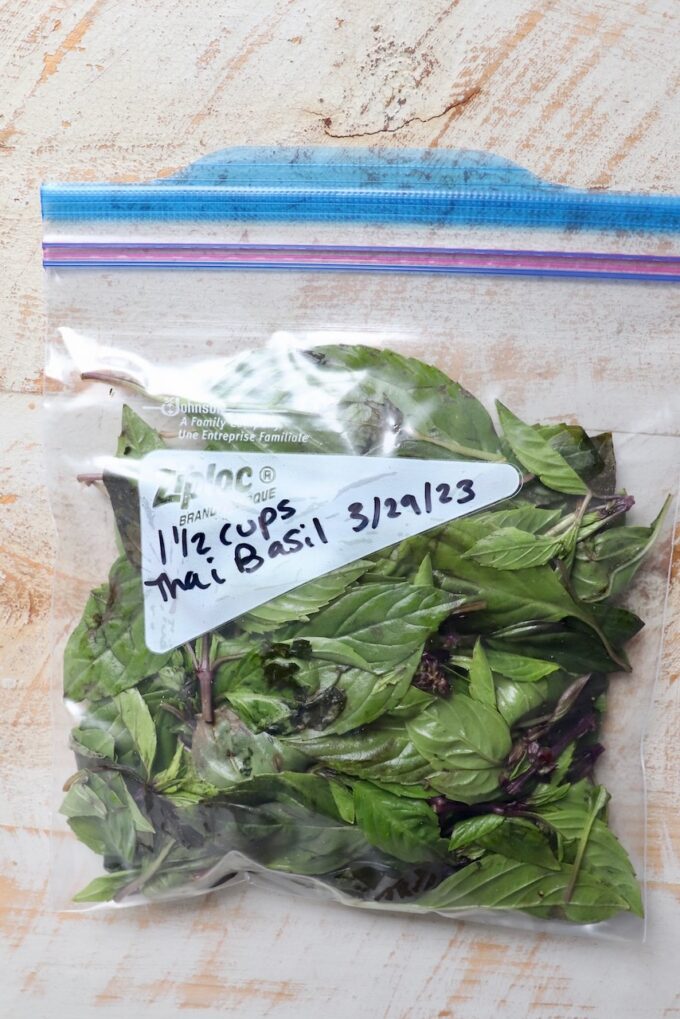
How to freeze Thai basil
Because Thai basil can be hard to find at some major grocery stores, I like to buy it in bulk, then portion it out and freeze it to use later. Frozen Thai basil will still maintain it’s delicious flavor and aroma if used within 6 months. Follow these 4 simple steps to freeze Thai basil at home.
- Wash the Thai basil. Remove the basil leaves from the stems. Rinse the leaves under cold running water to remove any dirt or debris.
- Dry the Thai basil. Pat the leaves dry with a paper towel or a clean kitchen towel, or place them in a salad spinner to dry them thoroughly. Make sure to remove as much moisture as possible, as excess moisture can lead to freezer burn.
- Portion and freeze the Thai basil. Divide the leaves into small portions and place them in freezer-safe containers or bags. Make sure to label the containers or bags with the date and contents. I freeze 1 1/2 cups in a bag, as that’s the amount required for my Thai Basil Chicken recipe, which we make regularly at home.
- Freeze the Thai basil: Place the containers, or bags, of Thai basil in the freezer. They will keep for up to six months. Remove the bags of leaves from the freezer and stir them into your favorite stir-fry, noodle dish or soup, just as you would fresh Thai basil. It will defrost and cook into the dish quickly.
Differences between Thai basil, basil and holy basil
Thai basil, holy basil and basil (also known as sweet basil, or Italian basil) are all members of the mint family, but they have some distinct differences in flavor, appearance, and culinary uses. Here are some of the main differences:
- Flavor: Thai basil has a stronger and more complex flavor than sweet basil. It has notes of licorice, mint, and clove, with a slightly spicy and sweet taste. Basil, on the other hand, has a more subtle and sweet flavor with hints of pepper. Holy basil has a sweet, slightly spicy, and minty flavor with a strong flavor of cloves and pepper.
- Appearance: Thai basil has narrower and slightly pointier leaves than basil, and its leaves are also darker green and shinier. The stems of Thai basil are also purple, whereas basil has green stems. Holy basil has broader leaves and green stems.
- Culinary uses: Thai basil is a key ingredient in many Southeast Asian cuisines, such as Thai, Vietnamese, and Cambodian. It is used in stir-fries, curries, soups, salads, and even drinks. Basil, on the other hand, is commonly used in Italian and Mediterranean cuisines, and is a staple ingredient in pesto. It is also used as a garnish, and to add flavor to soups, stews, and sauces. Holy basil is most commonly used in Indian curries, teas, and chutneys.
Overall, Thai basil, holy basil and basil have distinct flavors and culinary uses, so I do not recommend using them interchangeably in recipes. If you must substitute traditional basil for Thai basil, I also recommend adding mint to the recipe to replace that missing flavor.
More ingredients to learn about
Want to learn about more interesting ingredients to add to your kitchen pantry? Check out these other ingredient guides!
We are a participant in the Amazon Services LLC Associates Program, an affiliate advertising program designed to provide a means for sites to earn advertising fees by advertising and linking to amazon.com.


